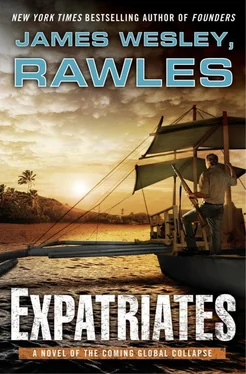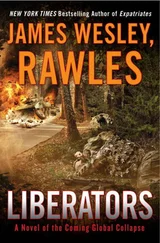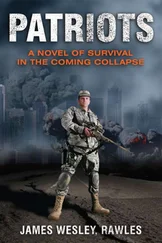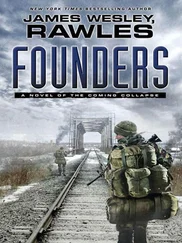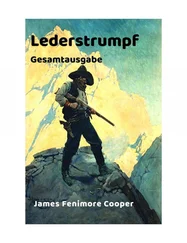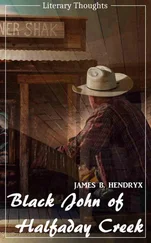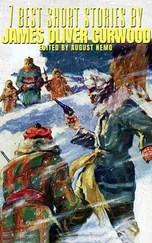When Chuck Nolan casually mentioned to his fossicking crew that he was interested in buying a rifle, Bruce Drake said, “Well, you’ve got to meet my uncle Thomas. He’s our family’s biggest gun guy. He has a lot of guns, and he’s quite the roo hunter. He was a farm foreman, but he’s retired now.”
Despite Chuck’s immediate interest in meeting Bruce’s uncle, he didn’t see Thomas Drake until a month later. In the interim, he learned, Uncle Thomas had done some thorough background checking on Nolan.
They met face-to-face for the first time at the Casuarina Gun Club rifle range, where Thomas was a member. It was a small club—the sort where each member had a key to the padlock on the gate.
The club had been established just a few years before, as an alternative to the Darwin Clay Target Club, which catered to trap and skeet shooters. There, some of the rifle shooters had felt the deep divide between the shotgun shooters and the rifle shooters. They felt like the rifle shooters were treated as second-class citizens. Even in the Northern Territory, which had a reputation for its casual and nonbureaucratic government, getting the permits and inspections required to establish the new range had taken a frustrating three years.
It was a hot afternoon, and Chuck and Thomas were the only shooters there. For a new club, the facilities were Spartan: Some earthen butts that had been bulldozed at various distances. A dozen shooting benches with posts made of ironbark eucalyptus and their tops and seats cut from plywood. Concrete had not yet been poured, but the forms for the concrete walkways were already under construction. A temporary shade structure covered only four of the benches.
Initially, they spent some time chitchatting as Thomas stapled a pair of targets on the frames at the 200-meter butts and set up his spotting scope. Thomas had brought three rifles with him that day: a Mauser sporter that had been rechambered to .243 Winchester with a heavy bull barrel, a BSA Model 15 .22 rimfire target rifle on a Martini single-shot action, and a Scout-sporterized .303 No. 4 Mk 1 Short Magazine Lee-Enfield (SMLE) bolt action. It was the latter rifle that Drake had hinted he might be willing to sell.
Their first half hour of shooting was quite deliberate, as Drake shot the Mauser .243 in three-shot groups from a sandbag rest, comparing the accuracy of four different hand-load batches that he’d made, which had slightly different powder charges. Chuck was impressed to see that Thomas had a detailed shooting log book wherein he made notes on the temperature, humidity, and estimated wind speed. After he’d found the most accurate load, he gave Chuck the chance to shoot the rifle. Shooting from the rest, his three-shot group measured less than two inches—larger than Drake’s best group, but still quite respectable.
Next, they shot the .303 caliber SMLE. Drake mentioned that he had inherited it from a relative in New South Wales where registration wasn’t required until after the Port Arthur tragedy. This rifle had been tucked away in the back of a closet and overlooked until after the registration deadline. When Thomas had inherited it, he didn’t have the heart to turn it in. Before they started shooting, Chuck mentioned, “I’ve been doing some research, and I’ve read that there is a particular sequence for loading the ammo into SMLE stripper clips so that the rifle won’t jam.”
Drake nodded. “Ah, so you have been doing your studies, have you? I’ve heard that you’re a man with close attention to detail. You’re right about that. Since these cartridges are rimmed, you have to be careful that they go into the chargers just like this.”
With Chuck watching carefully, Thomas dexterously loaded a stripper clip. He did it in a way so that, as the cartridges were sequentially pushed out of the magazine by the bolt, the cartridge rims wouldn’t get tangled up.
Chuck liked the rifle. It had a butter-smooth action and it had been partially sporterized with a good-quality forward “scout” style scope mount and a Schmidt & Bender long eye relief scope that was worth almost as much as the rifle itself. The rifle’s 10-round magazine, which could be rapidly reloaded with 5-round stripper clips (or “chargers” in the British Commonwealth shooting lexicon) was a nice plus. He would have preferred a more modern SMLE chambered in 7.62 NATO, but those were quite scarce.
Chuck noticed that the ammo they were using was the later vintage noncorrosively primed ammunition made in Greece in the 1970s, with an HXP head stamp. He would have given anything for some more-recently manufactured American-made Federal brand .303 British soft-tip hunting ammunition. Having once used that ammunition, he had been able to put two-round groups from a cold barrel into the same hole on paper at one hundred yards, from a well-cleaned, cut and recrowned barrel. He had even read that in the early 1980s, the American Olin-Winchester plant had produced modern military ball (FMJ) .303 British under contract for the U.S. government, to be sent to the Afghans fighting the Soviets at that time.
The rifle was a No. 4 Mk 1 model and was stamped ROF(F)—which indicated that it had been manufactured by the Royal Ordnance Factory at Fazakerly, England. As was typical of sporters, the forward portion of the handguard wood had been removed, and the remaining handguard tapered and rounded at the tip. Seeing this made Chuck cringe, as he hated to see original military rifles altered. However, he was glad to see that the sporterizing had at least been done neatly and that the scope mount and scope had been expertly installed.
Chuck shot five rounds through the SMLE rifle. With the high magnification spotting scope, he could see that all five shots had hit in a five-inch radius. This was good accuracy for two hundred yards—at least for a SMLE.
“That’s a fair grouping for that rifle when using surplus ammo. I think it suits you. Would you like to buy it?” Thomas asked.
Chuck smiled and said, “Yes, I like the idea of owning an American-designed rifle.”
“What? Lee-Enfields are British .”
Chuck shook his head and said politely, “Actually, the SMLE was a design refined in England by the Enfield arsenal, but the original designer was James Paris Lee, who was born in Scotland and raised in Canada, but he moved to the States in the 1850s. He was a naturalized American citizen, and that’s where he became a gun designer.”
“Oh.”
Chuck asked hesitantly, “Is it registered?”
Thomas snorted derisively and said, “Nah. Do you realize there are more unregistered guns than there are registered ones in this country? After the Port Arthur muck-up, us Aussies got wise and either started building hiding places in our walls or sharpened our spades.”
Chuck raised an eyebrow, and asked with a wry grin, “Some midnight gardening, eh?”
Drake laughed. “Too right.”
Chuck tested the rifle’s magazine release, popping the magazine in and out twice, and said, “You know, a Texan without a rifle is like an Englishman without an umbrella.”
Drake chuckled and gave him one last scrutinizing stare. “Okay, Chuck. Here’s what’s what: For five hundred dollars Australian, I’ll give you that rifle with the scope and sling that are on it now, and I’ll include eighty rounds of that Greek .303 ball.”
Chuck thrust his hand forward for a handshake, and half shouted, “We have a deal.”
Later that day, after thoroughly cleaning the rifle, Chuck did a Bing web search to find a ballistic “drop table” for .303 ball cartridges, calculated from two hundred to twelve hundred yards. After all, the .303 British cartridge was considered underpowered by modern standards (starting its drop even before two hundred yards), although the bullet’s relatively large grain weight still made the round accurate as well as a heavy hitter within six hundred yards. He printed a copy, trimmed it with scissors, and neatly taped it to the left side of the rifle stock, just forward of the magazine. While some gun collectors found this practice unsightly, Chuck was strongly in favor of practicality over style. He wanted to have a quick reference to the rifle’s ballistic characteristics handy at all times.
Читать дальше
